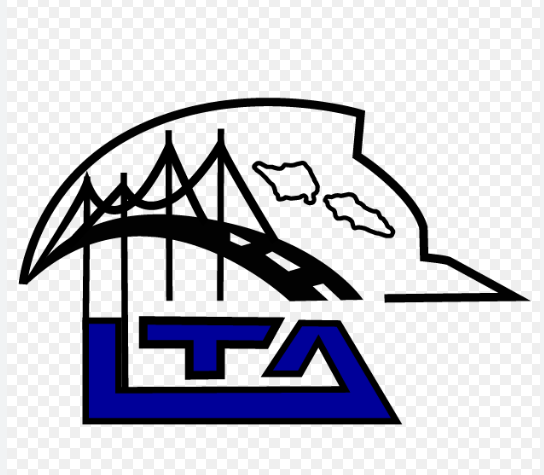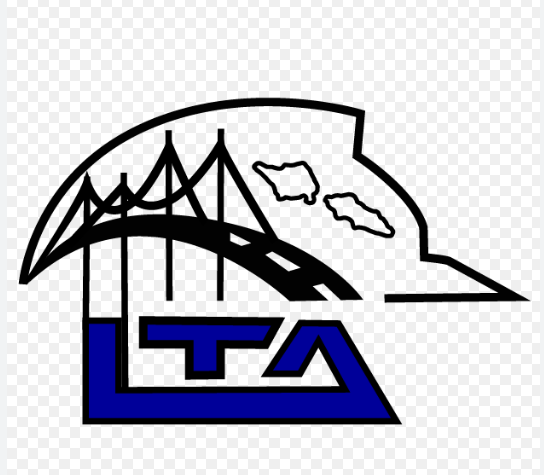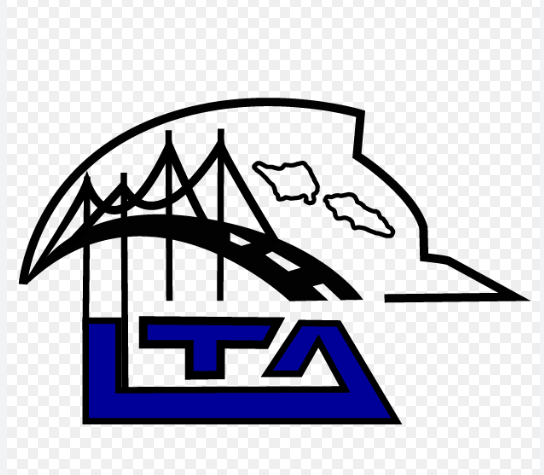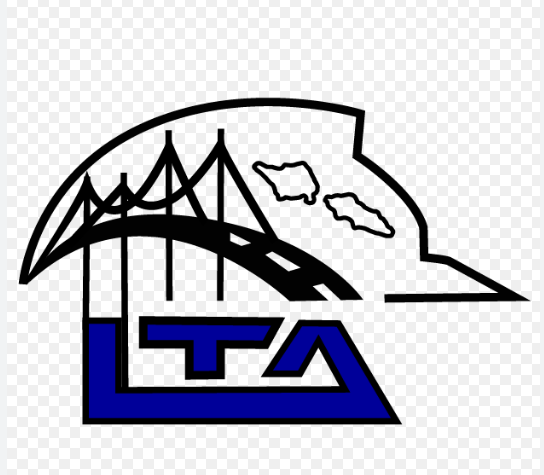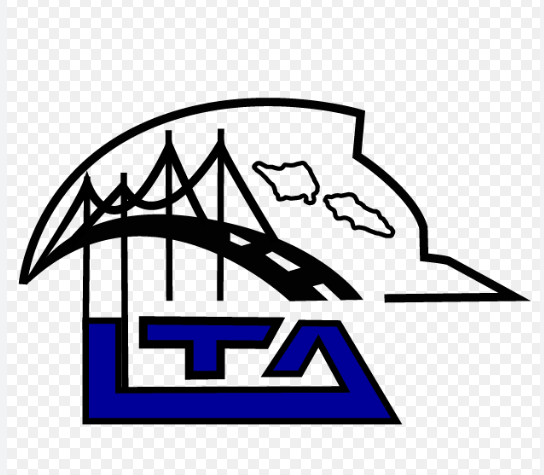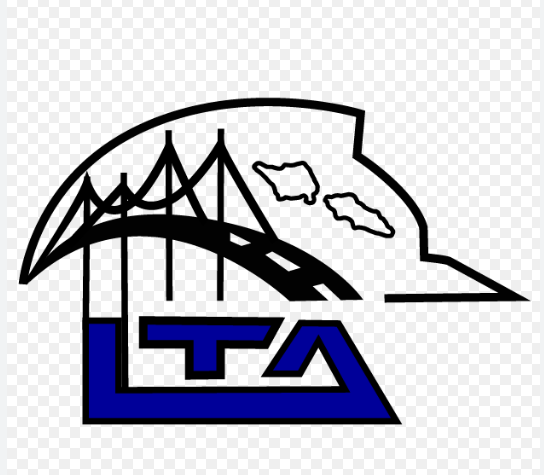Title Page
-
Road Name
-
Road Chainage Location
-
Inspection Location (Drop Pin)
-
Inspection Date
-
Inspected By
APPROACH ROADWAY Data
-
Road Width (m)
-
Road Surface Type
-
Height of Road above the base of FORD (m)
-
General Comments
-
Photos
FORD STRUCTURE Data
-
FORD Surface Pavement / Material Type
-
FORD base cross-sectional width (m)
-
FORD base length (m)
-
FORD base cross-sectional slope (%)
- Flat (less than 1% grade)
- Moderate (1% grade to 5% grade)
- Steep (above 5% grade)
-
FORD road approach slope length (top of approach road to base of ford) (m)
-
FORD Flow Direction (Relevant to Road Chainage Direction)
-
General Comments
-
Photos
FORD Upstream Channel Data
-
Upstream Channel Type
-
Upstream Channel Protection Material
- Natural Earth
- Rock
- Reno Rock Matress
- Stone pitched (Grouted Rock)
- Concrete
- Other
-
Upstream Channel Bottom Width (m)
-
Upstream Channel Longitudinal Channel Slope
- Flat (less than 1% grade)
- Moderate (1% grade to 5% grade)
- Steep (above 5% grade)
-
Upstream Channel Condition
- Clean and Clear of Debris / Vegetation
- Some Debris and Vegetation
- Blocked with Debris and Vegetation
-
Upstream Channel Erosion
- None - Well protected and vegetated
- Minor - Some surface erosion to stream bed and banks
- Major - Severe surface erosion to stream bed and banks
-
General Comments
-
Photos
FORD Downstream Channel Data
-
Downstream Channel Type
-
Downstream Channel Protection Material
- Natural Earth
- Rock
- Reno Rock Matress
- Stone pitched (Grouted Rock)
- Concrete
- Other
-
Downstream Channel Bottom Width (m)
-
Downstream Longitudinal Channel Slope
- Flat (less than 1% grade)
- Moderate (1% grade to 5% grade)
- Steep (above 5% grade)
-
Downstream Channel Condition
- Clean and Clear of Debris / Vegetation
- Some Debris and Vegetation
- Blocked with Debris and Vegetation
-
Downstream Channel Erosion
- None - Well protected and vegetated
- Minor - Some surface erosion to stream bed and banks
- Major - Severe surface erosion to stream bed and banks
-
General Comments
-
Photos
FORD Condition Assessment - Severity Level Descriptions
-
Condition State - Severity Level Rating Descriptions
-
1= The item is in excellent condition.
Description: The ford is in excellent condition with no visible signs of damage or wear. It functions as intended without any noticeable issues.
Indicators:
- No cracks, spalling, or visible deterioration in the ford structure.
- Vegetation and banks are stable with no signs of erosion.
- Water flows freely without obstruction.
- All safety features, such as signage and barriers, are intact and clearly visible.
- Approaches to the ford are smooth and free of any defects. -
2= The item is in good condition.
Description: The ford is in good condition with minor issues that do not affect its functionality. Maintenance may be required to address early signs of wear.
Indicators:
- Minor surface wear or small cracks that do not penetrate deeply into the structure.
- Slight erosion on banks or minor sediment accumulation.
- Vegetation is mostly healthy, with minor areas needing attention.
- Water flow is generally unobstructed, with small debris present.
- Safety features are mostly intact but may need minor repairs or cleaning.
- Approaches have minor defects like small potholes or slight unevenness. -
3= The item is in fair condition
Description: The ford shows moderate wear and deterioration that could affect its functionality if not addressed. Regular maintenance is needed.
Indicators:
- Moderate cracks or spalling in the ford structure, with some areas showing signs of deeper penetration.
- Noticeable erosion on banks and some areas of significant sediment accumulation.
- Vegetation shows signs of distress, with some areas of dead or sparse growth.
- Water flow is partially obstructed by debris or sediment.
- Safety features are still functional but show wear and need repair or replacement.
- Approaches have noticeable defects, such as larger potholes or uneven surfaces affecting vehicle access. -
4= The item is in poor condition
Description: The ford is in poor condition with significant issues that impair its functionality. Immediate maintenance and repairs are required.
Indicators:
- Significant cracks, spalling, or structural damage that threaten the integrity of the ford.
- Severe erosion on banks, with large areas of sediment build-up impacting water flow.
- Vegetation is largely unhealthy, with extensive areas of dead or missing plants.
- Water flow is heavily obstructed, leading to backwater effects or altered flow patterns.
- Safety features are damaged or missing, posing risks to users.
- Approaches are severely damaged, with large potholes, significant unevenness, or erosion impacting safe access. -
5= The item is in critical condition
Description: The ford is in critical condition and poses a significant risk to users. It is not functional and requires immediate closure and major repairs or replacement.
Indicators:
- Extensive structural damage with large cracks, spalling, or collapse.
- Extreme erosion on banks with the ford structure being undermined or at risk of failure.
- Vegetation is mostly absent or dead, with no effective bank stabilization.
- Water flow is severely obstructed, causing dangerous conditions upstream or downstream.
- Safety features are missing or completely ineffective, posing immediate danger.
- Approaches are impassable or extremely hazardous, with major defects making access unsafe.
FORD APPROACH ROADS- Condition Assessment
-
Is there any evidence of road pavement cracking, spalling, potholing, rutting or any other road pavement surface failures for the approach and departure road to the FORD structure?
-
Provide pavement failure description and approximate location & Area = length (m) x width (m) ) dimensions for the pavement failure mechanisms
-
Is there any evidence of frequent flood or tidal inundation impacts on the approach road to the FORD Structure (i.e. pavement edge drop off, debris / silt at high water line, ponding or standing water, scouring or erosion, soft saturated soils)
-
Management Required
-
General Comments - Provide Comments on Possible Rectification Description
-
Photos
FORD STRUCTURE - Condition Assessment
-
Is there any evidence of road pavement cracking, spalling, potholing, rutting or any other road pavement surface failures to the FORD structure?
-
Provide pavement failure description and approximate location & Area = length (m) x width (m) ) dimensions for the pavement failure mechanisms
-
Are there any signs of erosion or undermining around the base of the FORD structure? (i.e. scoured gully or channel, bare soil, undermined edges, cracks or settling, collapsed sections, exposed foundations)
-
Provide failure description with supporting photos as evidence
-
Management Required
-
General Comments - Provide Comments on Possible Rectification Description
-
Photos
FORD UPSTREAM INLET- Condition Assessment
FORD UPSTREAM INLET - Hydraulic Condition Assessment
FORD UPSTREAM INLET - Scouring / Erosion of INLET Channel
-
Is there any evidence of scouring or erosion of the UPSTREAM INLET channel / stream banks to the FORD?
-
Provide photographic evidence, description and approximate area of the scouring and erosion condition
-
Management Required
- No Repair Works
- Minor Repair works
- Major repair works
-
General Comments - Provide Comments on Possible Rectification Description
-
Photos
FORD UPSTREAM INLET - Flow Blockages (debris / vegetation / siltation buildup) of UPSTREAM INLET Channel
-
Is there any evidence of debris, vegetation or siltation buildup in the UPSTREAM INLET channel that would effect hydraulic performance of the FORD?
-
Provide photographic evidence, description and approximate length (m), area (m2) or depth (m) of the Flow Blockage Issue
-
Management Required
- No clearing of debris / vegetation required
- Minor clearing of debris /vegetation
- Major clearing of debris /vegetation
-
General Comments - Provide Comments on Possible Rectification Description
-
Photos
FORD UPSTREAM INLET - Low Flow Culverts
-
Is there any evidence of low flow culverts running under the FORD?
-
Culvert Type
- Box
- Circular
- Elliptical
- Low Profile Pipe Arch (small)
- High Profile Pipe Arch (large)
- Other
-
Dimensions (mm) - Diameter or Span x Height
-
No. of Cells
-
Is there any evidence of siltation blockage of the low flow culverts?
-
Provide photographic evidence, description of the low flow culvert Blockage Issue
-
Management Required
- Good Structural Condition
- Fair Structural Condition
- Poor Structural Condition
- No cleaning of silt / debris
- Minor clearing of silt / debris
- Major clearing of silt / debris
- Full Blockage of Silt / Debris - Replacement
-
General Comments - Provide Comments on Possible Rectification Description
-
Photos
FORD DOWNSTREAM OUTLET - Condition Assessment
FORD DOWNSTREAM OUTLET - Scouring / Erosion of OUTLET Channel
-
Is there any evidence of scouring or erosion of the DOWNSTREAM OUTLET channel / stream banks to the FORD?
-
Provide photographic evidence, description and approximate area of the scouring and erosion condition
-
Management Required
- No Repair Works
- Minor Repair works
- Major repair works
-
General Comments - Provide Comments on Possible Rectification Description
-
Photos
FORD DOWNSTREAM OUTLET - Flow Blockages (debris / vegetation / siltation buildup) of DOWNSTREAM OUTLET Channel
-
Is there any evidence of debris, vegetation or siltation buildup in the DOWNSTREAM OUTLET channel that would effect hydraulic performance of the FORD?
-
Provide photographic evidence, description and approximate length (m), area (m2) or depth (m) of the Flow Blockage Issue
-
Management Required
- No clearing of debris / vegetation required
- Minor clearing of debris /vegetation
- Major clearing of debris /vegetation
-
General Comments - Provide Comments on Possible Rectification Description
-
Photos
FORD DOWNSTREAM OUTLET - Low Flow Culverts
-
Is there any evidence of siltation blockage of the low flow culverts at the DOWNSTREAM OUTLET ?
-
Provide photographic evidence, description of the low flow culvert Blockage Issue
-
Management Required
- Good Structural Condition
- Fair Structural Condition
- Poor Structural Condition
- No cleaning of silt / debris
- Minor clearing of silt / debris
- Major clearing of silt / debris
- Full Blockage of Silt / Debris - Replacement
-
General Comments - Provide Comments on Possible Rectification Description
-
Photos
FORD Safety Elements
Guardrails and Fencing
-
Does the FORD have any guardrail or fencing on approaches and/or the FORD structure
-
Is the Guardrail or Fencing Intact and Properly Installed
-
Management Required
-
General Comments - Provide Comments on Possible Rectification Description
-
Photos
Signage and Guideposts
-
Does the FORD have approach Signage, Depth Markers and/or Guideposts Installed
-
Is the Signage, Depth Markers and/or Guideposts Intact and Properly Installed
-
Management Required
-
General Comments - Provide Comments on Possible Rectification Description
-
Photos
FORD Vulnerability Assessment - Severity Level Descriptions
-
FORD Vulnerability State - Rating Descriptions
-
1= NOT VULNERABLE - Description: The ford is built with robust materials designed to resist tropical weather conditions, typically located in less flood-prone areas. It functions well with minimal maintenance.
INDICATORS:
- High durability.
- Minimal maintenance.
- Low flood risk. -
2=SLIGHTLY VULNERABLE - Description: This ford may experience minor issues during typical rainy seasons, such as occasional debris blockages that require routine clearing. Minor wear like small cracks or rust is present but does not impact functionality.
INDICATORS:
- Minor wear and tear.
- Occasional debris blockages.
- Routine maintenance needed. -
3= MODERATLEY VULNERABLE - Description: This ford is more prone to debris blockages during storms, leading to temporary water pooling and minor flooding. Environmental factors cause quicker material degradation, necessitating regular maintenance and occasional repairs.
INDICATORS:
- Frequent blockages.
- Temporary pooling and minor flooding.
- Regular maintenance and repairs. -
4= HIGHLY VULNERABLE - Description: Located near the coast, this ford faces significant risks from storm surges and sea-level rise. It experiences accelerated corrosion, frequent blockages, and potential structural failures due to strong currents and increased sediment transport.
INDICATORS:
- Accelerated corrosion.
- Frequent debris and sediment blockages.
- Structural risks and extensive repairs. -
5 = VERY VULNERABLE - Description: This ford is in high-risk areas for severe weather events or low-lying regions susceptible to regular inundation. It may fail completely during extreme events, leading to road closures and significant transportation impacts. Maintenance is impractical, requiring a redesign.
INDICATORS:
- High severe weather risk.
- Regular inundation.
- Potential for complete failure.
- Impractical maintenance, requiring redesign / reconstruction
FORD Vulnerability Assessment
Exposure to Increased Flooding and Rainfall Intensity Vulnerability
-
Increased Flooding and Rainfall Intensity: Samoa's location in the Pacific exposes it to frequent tropical storms and cyclones, which are expected to increase in intensity due to climate change. The increased rainfall can lead to higher water volumes that existing FORDS might not be designed to handle, potentially causing overtopping or structural failure.
-
How vulnerable is the FORD to the potential of flow overtopping the road in terms of frequency for depths above 200mm high? Resulting in short term road closures and safety risks to public?
- Rarely Overtops <1 per year
- Sometimes Overtops 1< and <3 times per year
- Frequently Overtops more than 3 times per year
-
If flow was to overtop the roadway would the pavement material be adequate enough to withstand overtopping flows on the road?
- High Resilience - Concrete Pavement
- Medium Resilience - Asphalt Pavement
- Low resilience - Bitumen Sealed Pavement
- Failure Likely - Unsealed Pavement
-
Does the downstream side of the FORD have sufficient surface protection to withstand high velocities due to overtopping flows over the road?
- High Resilience - Concrete Protection
- Medium Resilience - Reno Rock Mattress / Gabion Protections
- Low Resilience - Dumped Rock Protection
- No Resilience - Natural Vegetation / Earth
-
If the road was required to be closed for an extended period would it cause significant effect to the road network (are alternative routes available)
- Alternative Route Available - Minimal Delays
- Alternative Route Available - Significant Delays
- No Alternative route Available - Extensive delays
-
Is there adequate space for the FORD to be extended or raised to increase annual inundation immunity?
- Yes - Adequate Space Available without need for extensive inlet/outlet channel works
- Yes - Adequate Space Available but will require extensive inlet/outlet channel works
- No- Will require extensive roadworks and channel works
-
Vulnerability Assessment of FORD for Increased Flooding and Rainfall Intensity
-
General Comments
-
Photos
Exposure to Increased Sediment and Debris Flow
-
Stronger storms and more intense rainfall can increase the amount of sediment and debris washed into FORDS. This buildup can obstruct water flow, leading to water backup and increased pressure on FORD structures, which may result in blockages or even structural damage.
-
How vulnerable is the FORD to the potential of increased sediment and debris flow causing future blockage
-
General Comments
-
Photos
Exposure to Corrosion from Saltwater
-
FORDS, especially those near the coast, are vulnerable to corrosion due to increased exposure to saltwater from sea spray and storm surges. Corrosion can weaken the structural integrity of FORDs, reducing their lifespan and effectiveness.
-
How vulnerable is the FORDS to Corrosion Potential?
-
Where FORD structure is concrete, are there any areas of exposed reinforcement or evidence of corrosion?
-
General Comments
-
Photos
Exposure to Sea Level Rise and Storm Surges
-
Rising sea levels and more powerful storm surges can exacerbate coastal flooding, especially affecting FORDS near the coastline. This not only leads to more frequent inundation but also to saltwater corrosion, which can degrade the materials used in FORD construction.
-
How vulnerable is the FORD to potential sea level rise or storm surge effects.
-
General Comments
-
Photos
FORD - Inspection Completion
-
Have Issues been identified that require Immediate Emergency Rectification (i.e. An Immediate Public Safety Issue)
-
Details of Emergency Rectification Required
-
Monitoring Required
-
General Comments
-
Completed Signature
